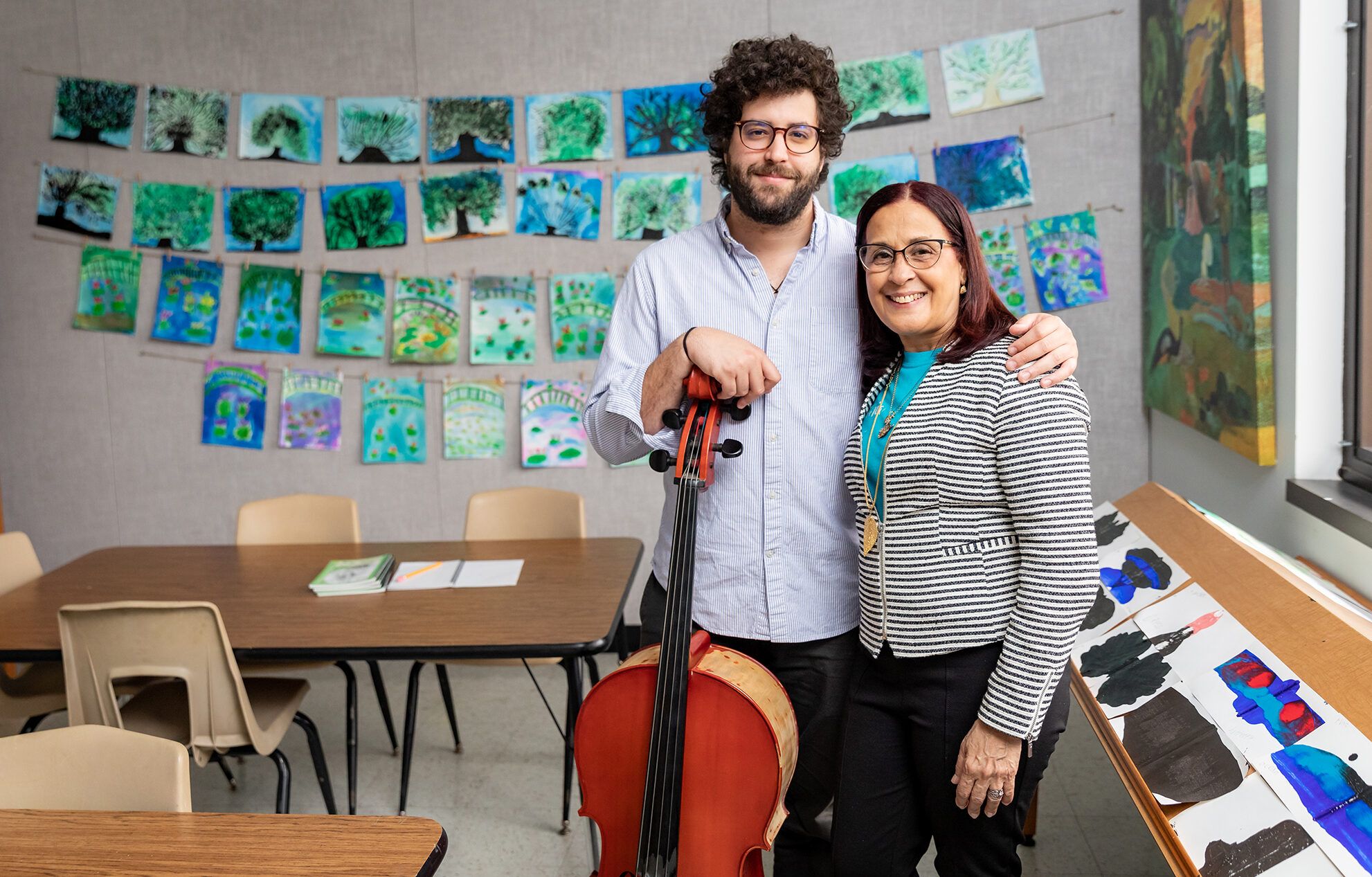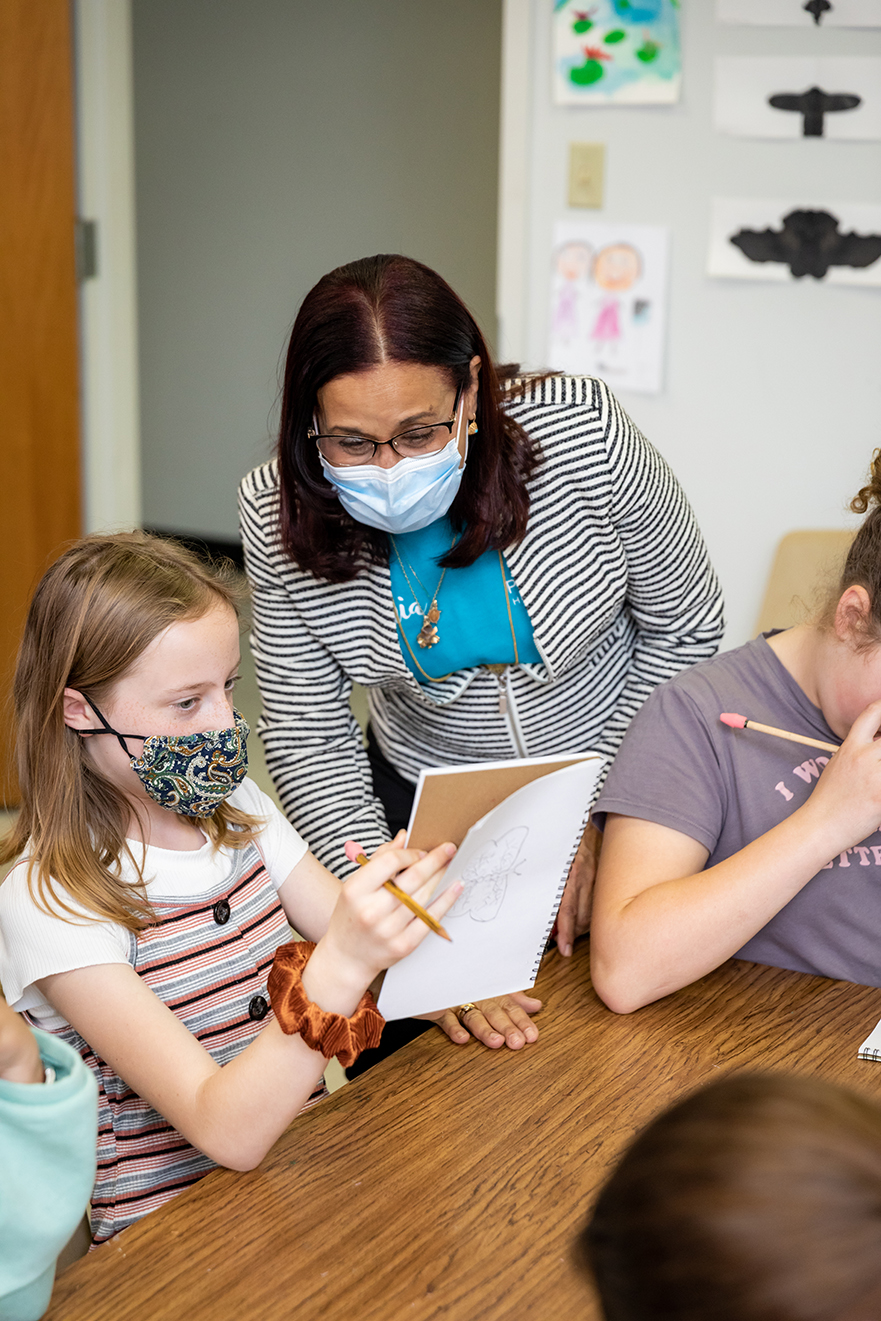
Palacios House of Arts strikes a harmony with classes that combine music and visual arts
One looks like a sea anemone, all black tentacles and tangles. Another stands firm in a sturdy salute toward the sky. And the next, tacked up with other paintings in an upstairs classroom at University Baptist Church, bears alien fruit in a hodgepodge of colors unseen in the late winter landscape of Baton Rouge. None of the depictions, surely, look exactly like the single oak tree each student had been asked to interpret. And none of them look alike. Somehow, the children gathered here for an art class with Palacios House of Arts have spilled out their imaginations and altered the look of reality, just as Gloria Ruiz de Palacios hoped they would.
Gloria, who founded the first Palacios House of Arts classes with her husband in their Southdowns home in 2018, is no stranger to the transformative power of creativity. As a former university professor of chemical engineering in her native Cuba, she managed to shirk society’s left-brain-versus-right-brain dichotomy, even earning a second degree in music appreciation. This last achievement would prove to be pivotal; her children Yillian and Raudol, raised mostly in Venezuela, would later dedicate their professional lives to the practice of music and art, eventually leading to the family’s move to Baton Rouge in 2014 in pursuit of Raudol’s studies at LSU. On Tuesdays and Thursdays, following the end of each Palacios group art class—which can be taught in both English and Spanish—Raudol leads cello and ensemble orchestra classes as the program’s artistic director, and works with Gloria to forge connections in the regional artistic community.
Now, with grant money in hand for the first time, Palacios can begin to expand even more, with Gloria looking forward to this summer’s “arts integration” camps—two-week sessions for children ages 5 to 12 in visual, musical and performing arts that will conclude with concerts, choreography and gallery exhibitions of campers’ work.
“Once we came here, we noticed that Baton Rouge didn’t really have programs that integrated music and visual arts, which is what I grew up around,” says Raudol. The school’s diverse roster of instructors, he notes, includes not just experts in art and cello but also piano, guitar, choir, ukulele, voice, violin, music theory, art history, Spanish and more, both for children and adults. “But musicians and artists share ideas and knowledge all the time, and have similar tendencies, so the integration seems natural to us.”
It seems natural to Jamie Heidelberg, too, who began working as a volunteer art teacher with the program after her daughter began taking Spanish lessons from Gloria.
“Studying art and music just forces your brain to work in new ways,” Heidelberg says. “The trial-and-error experience of drawing and painting, along with learning to read music and understanding its technicalities—it’s all very similar to learning a new language.”
From Cuba to Venezuela to Baton Rouge, Gloria’s personal experience testifies to the bridge-building potential of arts education. She names cultural appreciation as one of Palacios’ primary artistic missions.
“Knowledge of the arts naturally integrates into each period of a person’s life—even an engineer’s,” she says. “It gives people the tools to create new environments, to strengthen creativity. And all of that is learned through art.”











